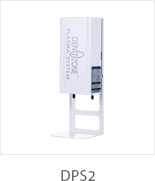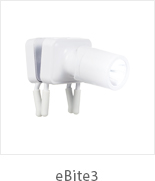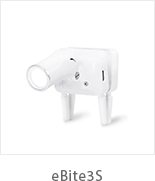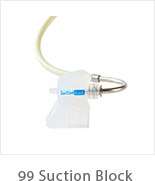| Title | 20 Best Tweets Of All Time About Stove Log Burner |
|
Stove Log Burner Basics Stove log burners make use of wood as fuel which is an energy source that is renewable and emits less pollution than gas, electricity or oil. However this is only true when the wood is sourced sustainably and burned. Avoid using compressed combustibles such as paraffin firelighter logs in your stove as these do not burn properly and may affect the air regulating mechanism. Selecting the right cheap wood burning stoves It is essential to select the correct wood for your stove's log burner. This is because the kind of wood you burn will influence the amount of heat your stove generates and can also have an impact on the amount of smoke produced. Therefore, it is recommended that you buy firewood that has been dried and seasoned. This will ensure the wood burns cleanly and efficiently and emits less smoke. In addition, it is recommended that you purchase a lot of wood to ensure you be able to keep it for many years. A wood burner is a great way to heat a room and can provide a cosy atmosphere in which to relax and enjoy time with friends and family. It is a great alternative to other fuels like oil or gas and can be used in the event of a power outage, as it doesn't require electricity for operation. It is a great idea to choose a particular area for storing your wood logs. This will prevent them from becoming wet and becoming rotting. The best place for this is under cover, where the logs can be kept upright and in a flow of air so that they can dry evenly. This will keep the wood warmer and decrease your stove's cost. Ideally, you should use hardwood logs as they offer more heat output per cubic metre. However, [Redirect-301] this isn't always feasible since the cost of hardwoods can be substantially more than softwoods. If you are unable to use hardwood, then we suggest you choose an alternative that has a lower moisture content. Birch, for example, contains a lot of moisture and can produce excessive smoke when it is burned. It is also important to remember that although it may be tempting to take firewood from the local woods or forest, this is illegal. It is not legal to collect wood from forests without the permission of its owner. It is recommended to purchase your wood from trusted suppliers. Getting the fire started It's time for you to light the fire once you have selected the appropriate wood for the stove log burner. There are a few things you need to keep in mind to ensure a good, constant burn and minimize smoke emissions. Consult the manual of your fireplace or stove for information on how to construct fires. The damper allows air into the stove or fireplace and it's important to have it open when you start a fire, so that logs can be lit. Once the fire is burning but not yet lit, it is important to close the damper to control the flow of heat and airflow. If you're having trouble getting your log burner to light it might be beneficial to make use of a few pieces newspaper and firelighters to get the flames going. You could also try using a piece of dry bark or wood chips to help fuel and ignite the flames. Put a few logs on the top of the pile and continue adding more until the fire is fully roaring. When adding logs to the stove, it is best to stack them horizontally and ensure they don't touch the walls of the stove or the glass pane. Then, you can stack smaller logs over them and finish with some birch paper or bark for burning. Keep in mind that the log burner requires lots of air to burn. Don't hinder the airflow by stacking logs. Always ensure that the logs are dry before you use them. Try smacking two logs. Wood that is moist makes a thudding sound, while dry logs will crackle and flake. You can also check for moisture by putting your hand in the fire and feeling the temperature. If it's hot, you're ready to go! It is also important to add new logs to the fire before closing the door. This will stop the existing logs from becoming smothered and cutting off the oxygen supply to the flames. It's also important to monitor the fire regularly and adjust it if needed. Maintaining the fire A stove log burner is a fantastic alternative to an open fire and can save money on fuel bills as well as providing an efficient method of heating your home. It takes a lot of time and trial-and-error to discover the most effective methods to manage a wood-burning fireplace that burns all night. The first thing you need to do is to know your stove's log burner fire. A great fire should have flames that dance and light up with smoke. However, you should stay clear of flames that are too fierce or spitting. This can cause the heat to rise through the chimney rather than into your room, and also contribute to the buildup of particulates within your home's atmosphere. You should also get to know the best place to put coals in stove log burner. You can achieve a successful combustion by pushing any old coals to the back of the stove and adding newer coals to the front. This creates a powerful heat source that can be used to ignite larger logs. Depending on the stove you have, you may need to adjust the air vents after the fire gets going. Start with the primary vents open, and close them after the logs begin burn on the outside. It is essential to understand how to regulate the stove's log burner properly. If you shut off the vents too early, the fire will go out. If you're using a stove log burner it is recommended to use only dry wood for the fire. If your wood has a high moisture content it's going to struggle to burn and generate large amounts of smoke and pollution. Only use seasoned and kiln dried wood from a responsible source such as Woodsure. It is not recommended to make use of compressed combustibles like wood briquettes within your electric stove fires log burner. They are not logs, and their physical composition can affect the appliance's capacity to regulate air flow around the combustion process. Similarly, you should never make use of paraffin firelighters on your stove since they are made of fossil fuels and therefore have no place in a green wood burning stove that is approved by the manufacturer for this purpose. The fire is put out Log burners are gaining popularity for homeowners due to their comfort, character and ability to reduce the dependence on fossil fuels to heat homes. It is crucial to know the fundamentals of operating the stove log burner in order to maximize the benefits of this kind of fire and avoid costly mistakes. If you are using a stove that has log burners it is recommended that you choose wood stove burning (replant.Kr) that is well-seasoned. It is important that the wood has been cut, stacked and then split for at least a year in order to allow it to dry naturally. It is also important to remember that the dryer the wood, the more efficient the burn and the less ash it will create. Stacking the logs in a cool, dry place is essential to allow the wood to dry out. This is particularly crucial if you intend to build a large-scale fire. You can also purchase kiln-dried logs that have been pre-seasoned to make a better fire and produce fewer ashes. It is important to begin with small wood burning stove pieces of firewood and then gradually increase the size as the flames expand. This will ensure that the fire is evenly ignited and won't release sparks or cause the glass to crack. It is also essential to avoid adding too much corner wood burning stove all at one time, as this can make the fires weak and stop them burning long enough to produce the desired heat output. In addition, it is essential to avoid using rubbish or scrap materials in your log burner. These materials can create excessive smoke and could catch the flames. Most stoves are fitted with air vents which can be closed or opened to control the supply of oxygen to the flames. They can be opened or [Redirect-302] closed by a lever under or beside the door, with many stoves also having a damper that can be closed and opened to open the flue. In order to put on a stove log burner fire the first step is to close the stove's door and open the chimney flap. It is recommended to use a metal lid or similar item to stop the flames. This will stop the fire from reigniting and stop harmful fumes like carbon monoxide from escaping into the air. It is recommended that the ashes cool before removing them as they could pose a threat when stored near to anything that is flammable. |
|











